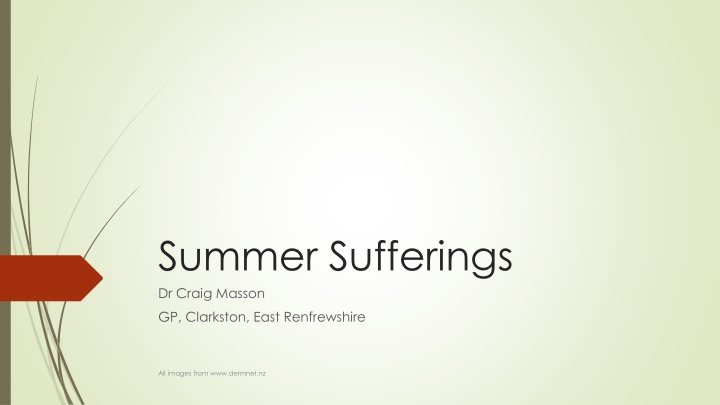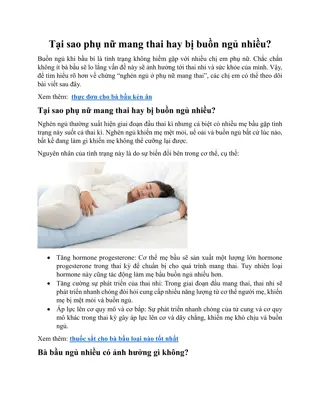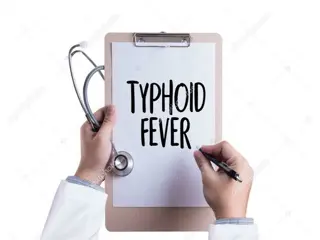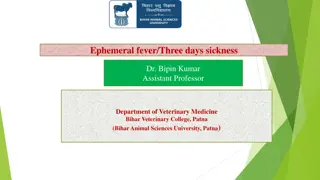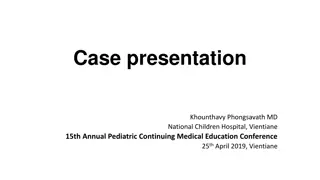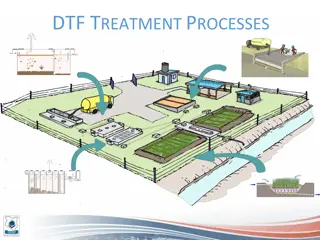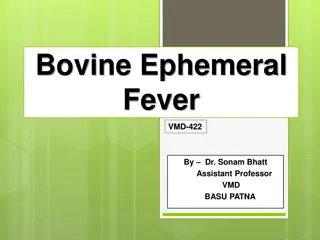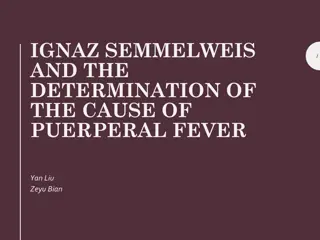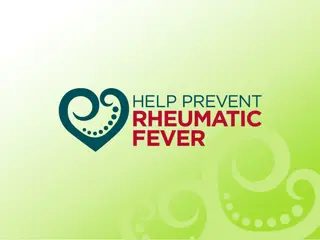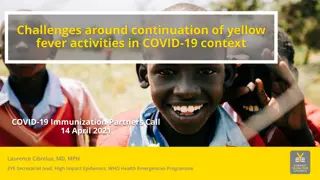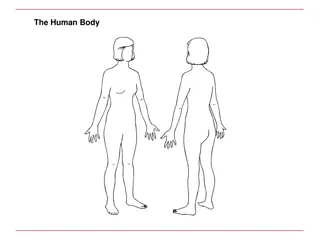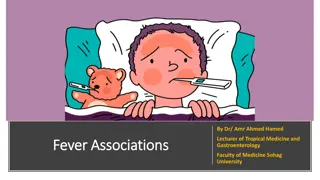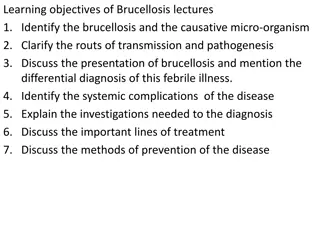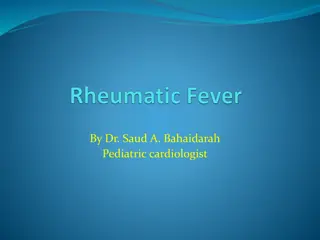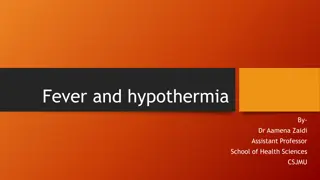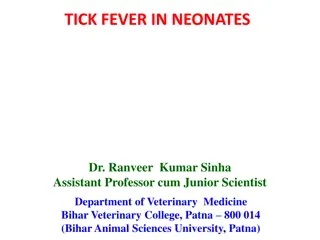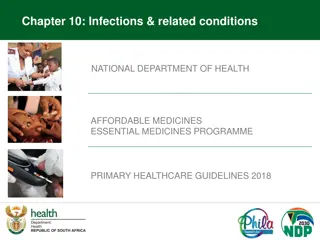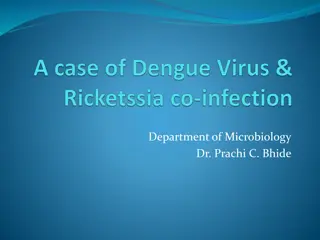Summer Sufferings: Treatment Options for Hay Fever and Related Conditions
Dr. Craig Masson, a GP in Clarkston, East Renfrewshire, discusses prescribing and non-prescribing options for hay fever, sinusitis, prickly heat, urticaria, and Lyme disease. The content covers the challenges of managing hay fever symptoms including grass and pollen allergies, and suggests non-pharmacological strategies like avoiding allergens. It also details over-the-counter pharmacy options and specific prescription treatments for hay fever, such as olopatadine eye drops and stronger steroids for rhinitis. Patients are advised on suitable antihistamines and nasal sprays based on age and symptoms.
Download Presentation

Please find below an Image/Link to download the presentation.
The content on the website is provided AS IS for your information and personal use only. It may not be sold, licensed, or shared on other websites without obtaining consent from the author.If you encounter any issues during the download, it is possible that the publisher has removed the file from their server.
You are allowed to download the files provided on this website for personal or commercial use, subject to the condition that they are used lawfully. All files are the property of their respective owners.
The content on the website is provided AS IS for your information and personal use only. It may not be sold, licensed, or shared on other websites without obtaining consent from the author.
E N D
Presentation Transcript
Summer Sufferings Dr Craig Masson GP, Clarkston, East Renfrewshire All images from www.dermnet.nz
Prescribing and non-prescribing options in: Hay Fever Sinusitis Prickly Heat Urticaria Lyme Disease
Hay Fever Grass and/or pollens Seasonal rather than perennial, but difficult to avoid unlike dog/cat Conjunctivitis redness, itchiness, stringy discharge, oedema Rhinitis sneezing, dripping, blockage Often a combination of systemic and localise control measures needed Compliance/adherence can be big issues patients prefer "quick fix"
Non-Pharmacological Options Avoiding the allergens is trickier than in other cases of rhinitis such as dander allergy If allergic to tree pollen, that is usually dispersed at dawn and dusk, so sleeping with the window open can increase exposure Avoid garden after mowing Avoid eye-rubbing as that breaks pollen into smaller chunks with more antigen surface area (easier said than done!)
OTC/Pharmacy 1st Options Conjunctivitis: Sodium cromoglicate eye drops (OTC,all ages) Rhinitis: Xylometazoline drops/spray (> 6yo), Beclometasone spray (>18yo) (unless a prescriber) Systemic: Chlorphenamine (>1mo), Cetirizine, Loratadine (>2yo for liquids and 6yo for tablets) Therefore, without prescription, any child can have an appropriate antihistamine + eye drops, and anyone over 6 can also have a nasal spray/drops.
Hay Fever Prescribing Conjunctivitis Olopatadine eye drops 1mg/ml eye drops Age 3+ Slow onset of action and duration limited to 4 months Rhinitis stronger steroids Mometasone, Budesonide, Fluticasone sprays Betametasone, Fluticasone drops Dymista steroid + antihistamine Systemic stronger antihistamine Fexofenadine 120mg daily (>12),30mg BD (6-11yo) Licensed but not in guidelines Kenalog 40mg IM / month Unlicensed Cetirizine 10mg 2 4 times daily (ECG required)
Sinusitis Most patients using the term mean an uncomfortably stuffed up nose with headache Viral illness, polyps, allergy Usually resolves within 14 days with self-help measures and OTC meds Same as for seasonal rhinitis xylometazoline, beclometasone Prescribing for non-infected sinusitis also the same as for seasonal rhinitis e.g. stronger nasal steroids
Infected Sinusitis Congested nasal symptoms plus: Duration > 10 days Acute facial / dental pain ( tingling teeth ) Tender maxilla Purulent discharge Fever Rx either: Doxycycline 200mg stat then 100mg daily, 5 days Amoxicillin 500mg TDS, 5 days Suggest urgent GP/OOH if appears unwell e.g. drowsy/confused/face visibly swollen
Prickly Heat Miliaria Rubra is the proper name. There are three types of miliaria, but the one referred to as prickly heat and seen in the summer is m.rubra.
Prickly Heat Normally healthy skin is exposed to excessive sweating through unexpected heat/humidity, travel to hot climates, exercise or fever. Often seen in primary care after a hot spell or on return from holiday Can be made worse by synthetic clothing against the skin The sweat glands get clogged up with sweat not clearing away Differentials to consider: Recent new meds/chemotherapy = drug induced hyperhidrosis Recent illness e.g. throat infection = Stevens-Johnson syndrome Also assess for similarity to/presence of: Herpes Superimposed bacterial infection
Non-Pharmacological Treatment Work in an air-conditioned office for at least a few hours a day Sleep in a ventilated, cool bedroom Move away from a tropical climate, avoiding humid weather Avoid excessive clothing and tight clothing Avoid excessive soap and irritants Wear shirts and blouses made of breathable synthetic fabrics or cotton Remove wet clothing Cool water compresses and taking a cool bath
Prescribing Options Calamine lotion to relieve discomfort; because calamine lotion is drying, an emollient may be required. Treatment of fever with antipyretic such as paracetamol Mild topical steroids Antiseptics and anti-staphylococcal antibiotics for secondary infection.
Urticaria Complex, as can be allergic or non-allergic and even spontaneous/idiopathic I use an EMIS template at work to help me! So, let s keep it simple: 1. Is it urticaria and angioedema or urticaria alone? 2. Is it widespread or localised? 3. Can the patient connect it with an external factor e.g. touching a plant/bee sting?
Urticaria & Angioedema Make sure not struggling to breathe (obviously) Check if known allergies/carries adrenaline Advise to discontinue any ACEi or AIIR Discontinue any antibiotics Refer to GP for urgent appointment Give chlorphenamine to get started
Widespread Urticaria Suggestive of a more systemic aetiology e.g. illness, ingestion, spontaneous If chronic - > 6 weeks routine appointment GP for investigation If acute - < 6 weeks you can prescribe antihistamines e.g chlorphenamine, cetirizine. Sedative antihistamine useful if sleep disturbed Bad cases often require unlicensed dosing e.g. cetirizine 10mg QDS Sometimes give prednisolone 20mg OD for 3-5 days if severe Advise to see GP if fails to clear up within a week or worsens
Localised Urticaria If isolated to one area, enquire about: Insect bites/stings Handling plants/working in garden Jewellery/make up if pattern fits Heat/Cold contact Tight clothing Appropriate for topical steroids e.g. hydrocortisone 1% or standard antihistamines depending on patient preference, or both. Likely to resolve in days if related to something as acute as a bite/sting, no need for GP appointment if clear history No need for tests what are we going to say with a positive result, NOW try to avoid wasps? !
Lyme Disease Fig 1: Alopecia chronica migrans, the tell-tale sign of being told the patient has self-diagnosed Lyme disease more than you d care to count
What is it? A systemic condition with multiple symptoms, mostly flu-like at presentation, with huge crossover with multiple differential diagnoses The pathognomic feature present in >70% of cases is a rash called erythema chronica migrans Caused by borellia burgdorferei, a bacterium transmitted by ticks Treatable, especially when caught early
Why tear your hair out? 1. I had a tick bite. Well, maybe. Something bit me. I don t know. If it was a tick, I have Lyme disease 2. I ve got this rash and Google says that means I have Lyme disease 3. 3 weeks of antibiotics? I don t know about that can t you do tests or something?
I had a tick bite. Well, maybe. Something bit me. I don t know. If it was a tick, I have Lyme disease Ticks live in wooded areas. They latch on and suck blood. The longer they are attached, the more likely they are to pass on b. burgdorferei, if they have it; Contrary to popular belief, only about 10-15% of ticks in the UK carry b. burgdorferei If something bit/stung them then flew away, it wasn t a tick If they show a good picture of a tick in situ, fair enough If they turn up with one attached, best removed with a tick remover or fine tweezers, to remove all the mouth parts which carry the bugs.
Ive got this rash and Google says that means I have Lyme disease Erythema chronica migrans typically starts 7-14 days after the tick bite, range 3-33 days Usually, a bullseye appearance but can just be red Usually not sore or itchy Many patients appear in the first 3 days with a painful or itchy rash spreading from a bite/sting mark This is more likely a common-or-garden localised response to either venom or bacterial infection from a.n.other insect bite/sting Can be managed as per Pharmacy 1st
3 weeks of antibiotics? I dont know about that can t you do tests or something? Strap in, here s the tough bit Lyme disease can be treated, more effectively if antibiotics are started early i.e. within 2 weeks of catching BUT blood tests, available in GP, are unlikely to be positive at 2 weeks and are usually more likely to show an antibody response between 6 12 weeks BUT by then it s pretty much too late to effectively treat, risking long-term or secondary complications to multiple organ systems.
So what should I do? Take a good history with attention to timeline If confident that it was a tick, but no rash present, explain only 10-15% carry the disease and explain to patient about presentation of erythema chronica migrans If rash consistent with ECM present and good tick history, suggest starting 3-week course of antibiotics whilst awaiting results of bloods done at 3-4 weeks, repeated 6 weeks later if initially negative (just finish course if positive on first test) Patient may conclude that simply taking the antibiotics is sensible; you don t stop them halfway through if a week-3 test is negative and you ll be finished by the time your bloods are positive Rx = Doxycycline 100mg BD or 200mg OD for 21 days, or, Amoxicillin 1g TDS for 21 days.
